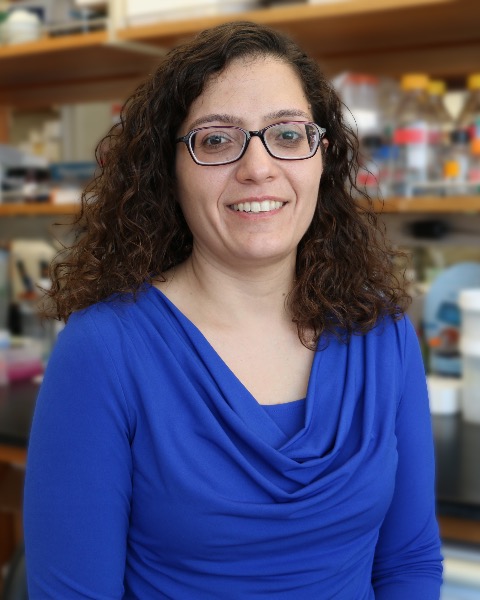Nephrology 3
Session: Nephrology 3
599 - Type IV Collagen in the Aorta - Lessons from Alport Syndrome Mice
Sunday, April 27, 2025
8:30am - 10:45am HST
Publication Number: 599.6842
Carmen Halabi, Washington University in St. Louis School of Medicine, St. Louis, MO, United States; Robyn Roth, Washington University in St. Louis School of Medicine, St. Louis, MO, United States; Michelle Lin, Washington University in St. Louis School of Medicine, Saint Louis, MO, United States; Meei-Hua Lin, Washington University in St. Louis, Saint Louis, MO, United States; Jeffrey H. Miner, Washington University School of Medicine, St. Louis, MO, United States

Carmen Halabi, MD, PhD
Associate Professor
Washington University in St. Louis School of Medicine
St. Louis, Missouri, United States
Presenting Author(s)
Background: Mutations in the type IV collagen genes, COL4A3, COL4A4 and COL4A5, lead to Alport syndrome (AS), a disorder characterized by progressive glomerulopathy, sensorineural hearing loss and ocular abnormalities. Recently, there has been an increasing number of case reports suggesting an increased risk of arterial aneurysms, particularly aortic, coronary and cerebral, in patients with AS.
Objective: Using mouse models of AS, we sought to determine whether mutations in Col4a5 and Col4a3, which account for most AS cases, result in aortic abnormalities.
Design/Methods: We first evaluated expression of COL4A3, COL4A4 and COL4A5 at the RNA and protein levels via quantitative RT-PCR, in situ hybridization using RNAscope technology and immunofluorescence. We then obtained baseline physiologic parameters (blood pressure, heart rate, cardiac function and aortic diameters) of Col4a3 and Col4a5 knock-out (KO) mice via invasive blood pressure monitoring using a Millar catheter and echocardiography. Lastly, we assessed function and structure of AS mice aorta using pressure myography and transmission electron microscopy (TEM), respectively.
Results: Col4a3, Col4a4 and Col4a5 were all expressed in mouse aorta, albeit at much lower levels than Col1a1. While COL4A3 and COL4A4 were limited to the adventitia, COL4A5 was found throughout the arterial wall, suggesting that type IV collagen 345 is limited to the adventitia while 556 is present throughout the arterial wall. Baseline blood pressure, cardiac function and aortic diameters of AS mice were not different than those of wild type (WT) littermate control mice. While aortic pressure-diameter curves were unaffected at baseline, ultrastructural examination of Col4a5 KO ascending aorta by TEM showed disruption of the internal elastic lamina and increased sub-intimal matrix deposition.
Conclusion(s): In summary, the presence of COL4A5 throughout the arterial wall suggests that patients with COL4A5 mutations may have a greater risk of aortic abnormalities compared to those with COL4A3 and COL4A4 mutations as COL4A3 and COL4A4 were limited to the adventitia. While there were no baseline changes in physiologic parameters or aortic diameters, the ultrastructural abnormalities noted in Col4a5 KO mice may increase the risk of arterial dilatation in the presence of another stressor, such as hypertension. Studies are underway to determine whether raising blood pressure via angiotensin II infusion exacerbates aortic dilation in Col4a5 KO mice.

